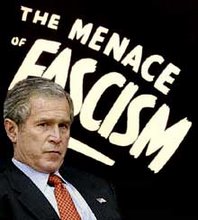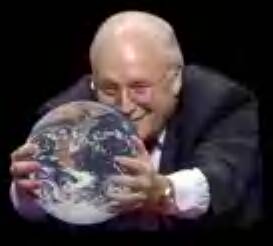C.I.A. Destroyed Tapes as Judge Sought Interrogation Data
WASHINGTON — At the time that the Central Intelligence Agency destroyed videotapes of the interrogations of operatives of Al Qaeda, a federal judge was still seeking information from Bush administration lawyers about the interrogation of one of those operatives, Abu Zubaydah, according to court documents made public on Wednesday.
The court documents, filed in the case of Zacarias Moussaoui, appear to contradict a statement last December by Gen. Michael V. Hayden, the C.I.A. director, that when the tapes were destroyed in November 2005 they had no relevance to any court proceeding, including Mr. Moussaoui’s criminal trial.
It was already known that the judge in the case, Leonie M. Brinkema, had not been told about the existence or destruction of the videos. But the newly disclosed court documents, which had been classified as secret, showed the judge had still been actively seeking information about Mr. Zubaydah’s interrogation as late as Nov. 29, 2005.
The destruction of the tapes is under investigation by the Justice Department and Congress.
One of the documents, a motion filed by Mr. Moussaoui’s lawyers to the United States Court of Appeals for the Fourth Circuit, cites several instances in 2005, including one after the videotapes were apparently destroyed, when government lawyers produced documents to the court that came from the interrogation of Abu Zubaydah.
The document states that on Nov. 29, 2005, government lawyers produced documents, including “intelligence summaries,” about Abu Zubaydah but never told the court about the existence or destruction of the tapes.
A response that was filed to the appeals court by federal prosecutors remains classified, government officials said. Mr. Moussaoui was convicted of terrorism-related charges in 2006, and the government officials said that last month an appellate judge had denied a motion by his lawyers, who argued that the destruction of the C.I.A. tapes meant the Moussaoui case should be sent back to a district court.
The tapes destroyed by the C.I.A. documented the interrogation of Mr. Zubaydah and a second Qaeda operative, Abd al-Rahim al-Nashiri, according to current and former intelligence officials.
After The New York Times notified C.I.A. officials in December that it intended to publish an article about the destruction of the tapes, General Hayden issued a statement to employees.
In it, General Hayden said he understood that the tapes were destroyed “only after it was determined they were no longer of intelligence value and not relevant to any internal, legislative or judicial inquiries — including the trial of Zacarias Moussaoui.”
Paul Gimigliano, a C.I.A. spokesman, said Wednesday: “The rulings in this case are clear, and the director stands by his statement. Nothing has changed.” A Justice Department spokesman, Dean Boyd, said he could not comment on the unsealed documents.
It is unclear whether the C.I.A. notified federal prosecutors in the Moussaoui case about the existence and destruction of the tapes before the matter became public. But one of the documents released Wednesday, a letter from Chuck Rosenberg, United States attorney for the Eastern District of Virginia, said a prosecutor in the Moussaoui case “may have been told in late February or early March 2006” about the Abu Zubaydah videotapes, but “does not recall being told this information.”
The papers made public on Wednesday were filed in the appeal of Mr. Moussaoui, who was sentenced to life in prison by Judge Brinkema, of the Eastern District of Virginia, in May 2006. The documents were filed in December under seal and made public this week with some redactions.
Mr. Moussaoui attended a flight school in Oklahoma in 2001 but was arrested in Minnesota on immigration charges before the Sept. 11, 2001, attacks. He admitted in 2005 to participating in terrorist plotting with Al Qaeda.
The new documents also raised new questions about a letter sent to Judge Brinkema in October by prosecutors in the Moussaoui case.
In that letter, prosecutors acknowledged that two declarations filed in the case by C.I.A. officials were inaccurate. The C.I.A. officials had denied the existence of video or audiotapes of interviews of certain Qaeda suspects, but the letter said the C.I.A. in fact had two videotapes and one audiotape of interrogations.
Intelligence officials have said the three tapes, which still exist, are separate from the hundreds of hours of videotape of Abu Zubaydah and Mr. Nashiri that were destroyed. It is unclear why the October letter did not mention those tapes or their destruction.
(In accordance with Title 17 U.S.C. Section 107, this material is distributed without profit to those who have expressed a prior interest in receiving the included information for research and educational purposes. I.U. has no affiliation whatsoever with the originator of this article nor is I.U endorsed or sponsored by the originator.)
The Nazis, Fascists and Communists were political parties before they became enemies of liberty and mass murderers.




No comments:
Post a Comment